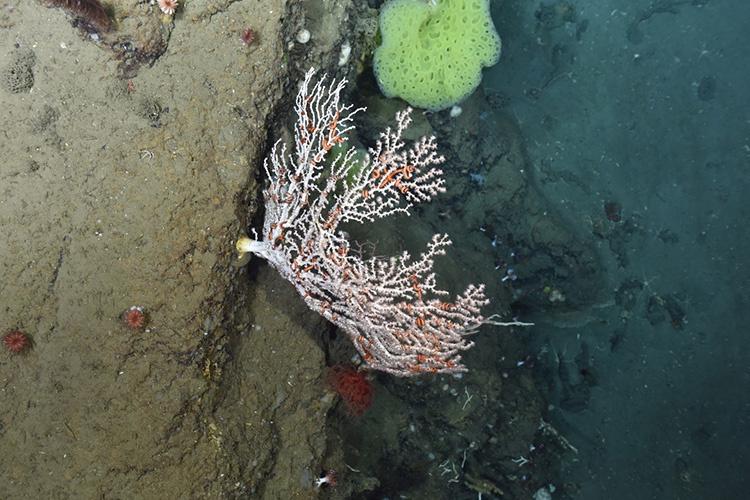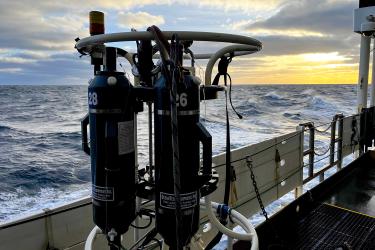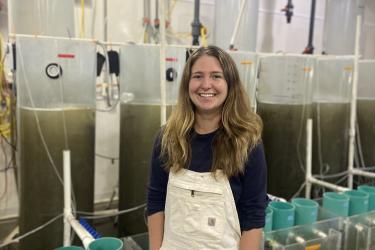Chief Scientist’s Weather Report: Cloudy with periods of drizzle, followed by a torrent of data.
June 16 we surveyed a minor canyon between Nygren and Kinlan canyons at depths from 1349-1038 meters, and June 17 we surveyed another minor canyon between Kinlan and Heezen Canyons from 973-692 meters.
What do we mean by a “minor” submarine canyon? What we are talking about are relatively small, unnamed and mostly unknown canyons that generally do not cut into the continental shelf, and are in between the major, named, and more well-known canyons. And in this area of the continental shelf just off of northeast Georges Bank, there’s certainly no shortage of the former stretching from Lydonia
Canyon northeast to the Canadian border. (The “minor” canyon between Heezen and Nygren that we explored in 2017 was recently named Kinlan Canyon in honor of one of our former colleagues.) We are surveying them because we want to see how they compare to the major canyons and to each other in terms of habitats; faunal abundance, diversity, and distribution; and physical characteristics.

The minor canyon between Nygren and Kinlan was somewhat similar to the unnamed canyon between Powell and Munson that was explored the previous day. But what was obvious was the prevalence of sponges over deep-sea corals. There were of course the large, white and yellow hexactinellid (glass) sponges, and several others we couldn’t identify. Sponges are notoriously difficult to tell apart or identify properly without resorting to dissection.
We saw the same suite of coral species as before with the addition of some charismatic species like the bubble gum coral. Again, most of the attached animals were found on hard substrate that “stuck out” or “stuck up” from the muddy sediments. But it’s also important to note that sponges and corals are themselves important habitat for other species (for
example: brittle stars, squat lobsters).

The minor canyon between Kinlan and Heezen canyons was full of surprises. First, the bottom topography could easily be described as “torturous.” There were lots of huge, vertical and steeply sloped bedrock features with overhangs jutting out into space; large rock walls with strange, sharply angled sides; and sometimes just an amazing jumble of bedrock and boulders.
That strange topography made for some good deep-sea coral and sponge habitat, even though they were mostly confined to the overhangs, terraces, etc. Overhangs in particular were well utilized by a fair number of species packed together. We would sometimes find dead or partially dead corals at the base of one of the slopes or walls, which led us up to the living ones attached to the terraces above.

Again, sponges were an important part of the overall faunal makeup at this site, and the composition of coral species was different (probably all depth related, as it was shallower here than our previous sites). One important colonial stony coral we encountered here was Lophelia pertusa. You can check here as to why Lophelia is considered such an important coral.
Only recently has L. pertusa been found in any abundance off the Northeast U.S. coast. Additionally, this species is an important structure-forming organism which provides shelter and substrate for other organisms.
Dave Packer, NOAA Fisheries Northeast Fisheries Science Center
Aboard the NOAA Ship Henry B. Bigelow HB19-03


